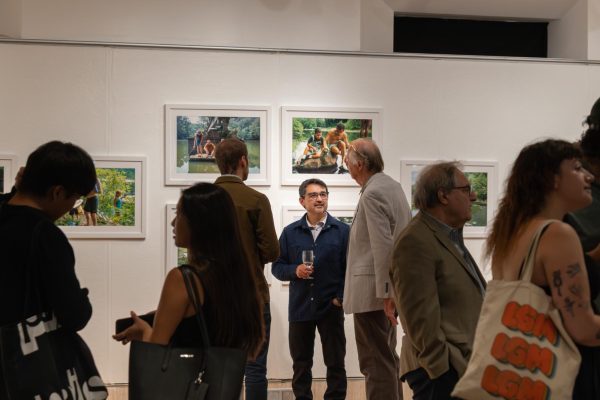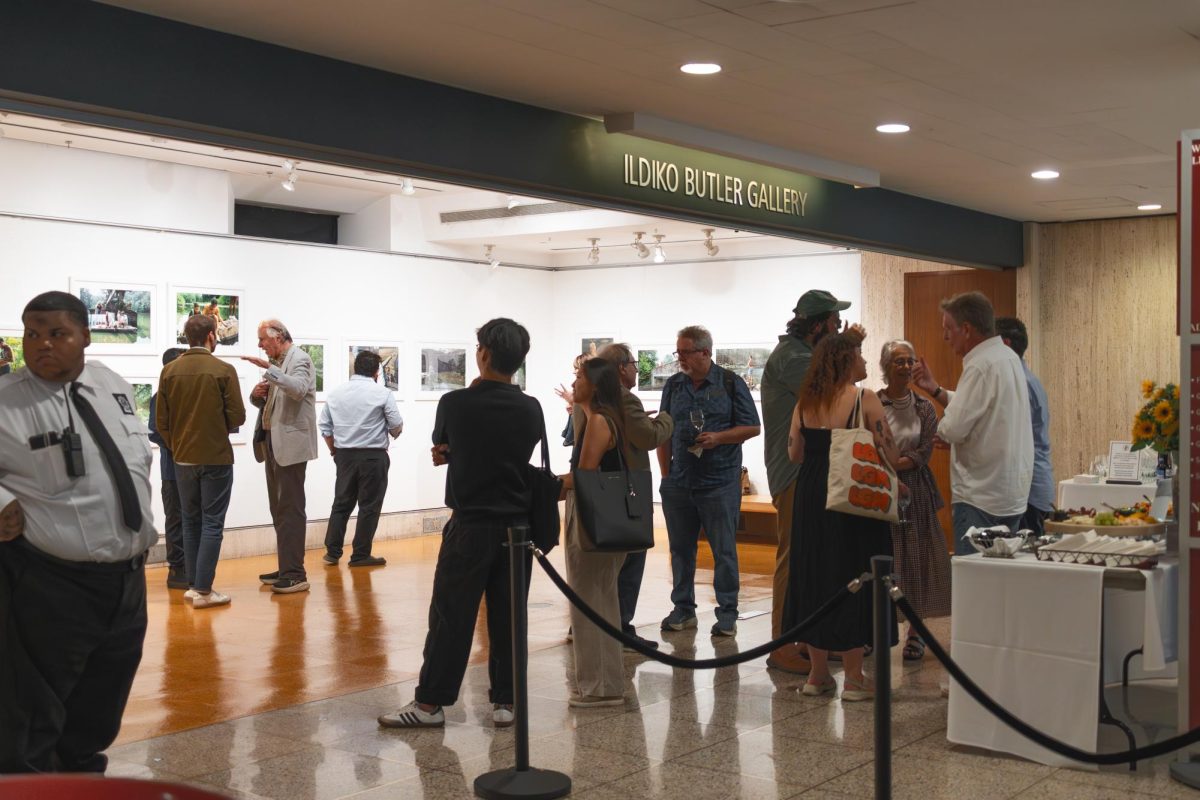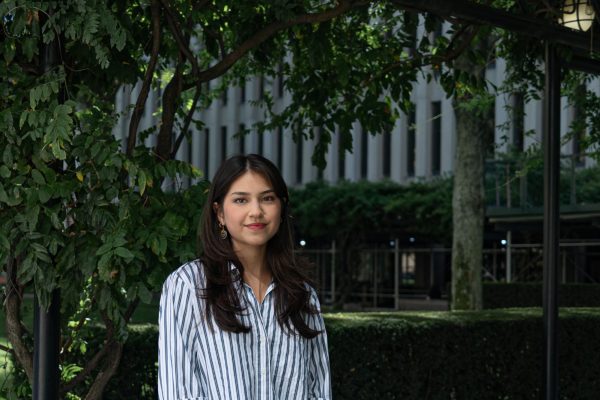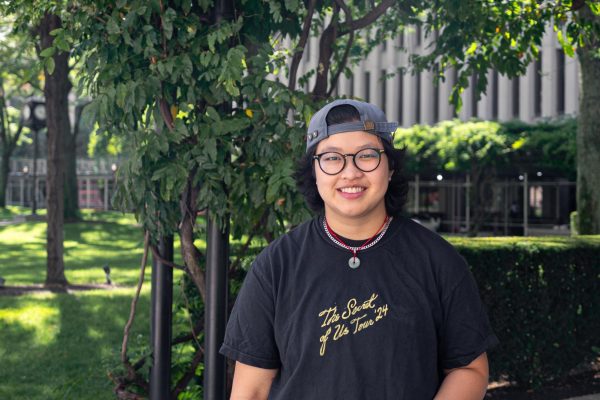“Ground Meets Water,” a photography exhibition by Michael Chovan-Dalton, opened earlier this summer in the Ildiko Butler Gallery. Captured in and around bodies of water in New Jersey, this collection of photographs evokes the slow ritual of fishing and the ways in which families pass down traditions.
Chovan-Dalton moved to Hoboken, New Jersey in 1993. Over the course of 32 years, he learned the natural glory of the Garden State. In the overlooked places — reservoirs, canal paths, muddy riverbanks — he noticed people teaching their children how to wait. In photos taken this year, Chovan-Dalton captured those quiet moments of shared patience.
The large stills evoke convergence — generations meeting, differences dissolving in pursuit of the same goal. The New Jersey landscapes offer the edge of suburbia, where domesticity runs up to the wild. Chovan-Dalton suggests that these spaces are natural equalizers. In one photo, a man in a suit and a boy in sneakers both kneel by the same water.
The New Jersey landscapes offer the edge of suburbia, where domesticity runs up to the wild.
Joe Lawton, who curated the exhibit, has taught photography at Fordham for over 35 years. He had been in the same circles as Chovan-Dalton for a long time, but discovered his photos relatively recently.
Lawton remembers being impressed by how simple and poignant the work was upon first look.
“It celebrates the everyday joy of sight, and if you’re paying attention, the wonderful little lyric of details you can see. So I thought, ‘What a great summer show,’” Lawton said.
Plans came together in the Ildiko Butler Gallery, located in the lobby of the Leon Lowenstein Center. It is one of two spaces on campus dedicated to hosting professional outside artists. In addition to the Lipani Gallery, it also serves as a primary showcase for seniors in the visual arts program to present their thesis projects. Both spaces are named after Lawton’s former students whose families continue to support visual arts education at Fordham to this day.
In a cultural moment that often demands immediacy and spectacle, “Ground Meets Water” resists.
To Lawton, the Butler Gallery provides the Fordham community a social space akin to those captured in Chovan-Dalton’s lens.
“You come down the escalator and it’s almost like the curtain pulls up when you see it,” Lawton said. “What’s really wonderful is everyone at the university is going to come through there — guests, students, faculty … some of the best remarks we get are from the facilities people.”
Beyond its accessibility to the public, the Butler Gallery offers a level field for the artists it displays. For Fordham students, the chance to present their work in the same gallery that career artists do is both dignifying and motivating.

Through these qualities, the Butler Gallery finds a spiritual alignment with Chovan-Dalton’s work. It is an oasis in our midst where anyone can come together, share, learn and disperse — perhaps the earliest way we bond with one another and strengthen our communities. If you wander in and take a moment to meditate, you might just sense “the feeling that a tradition or an important skill was being passed along,” as Chovan-Dalton writes in the exhibition text.
In a cultural moment that often demands immediacy and spectacle, “Ground Meets Water” resists. Its power lies in its stillness, and in the idea that what we can teach one another might still be enough.
“Ground Meets Water” closed on Sept. 8 in the Ildiko Butler Gallery.




Michael Chovan-Dalton • Sep 11, 2025 at 9:12 am
Thank you so much! This is beautifully written.